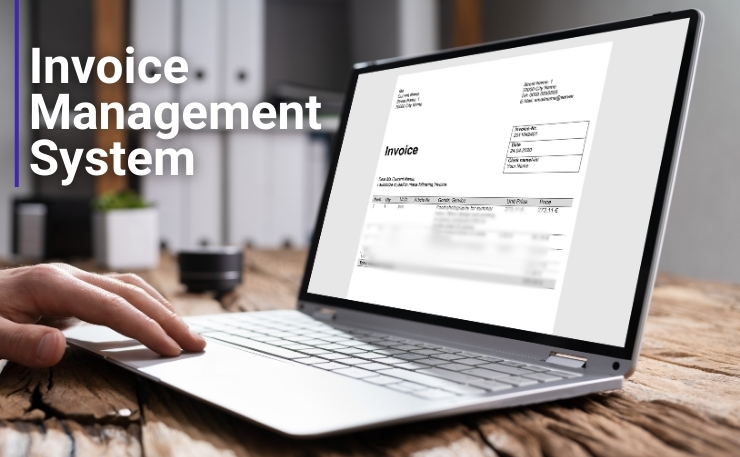Table of Contents
Reassessing the Legal Fiction and Operational Compulsion of the Invoice Management System under GST. While IMS remains voluntary de jure, its de facto implementation leaves taxpayers, especially MSMEs, with no real choice.
The Invoice Management System (IMS) was initially unveiled as a voluntary tool aimed at simplifying GST compliance by offering real-time reconciliation between supplier and recipient invoices. At the time of launch, the GSTN and the government promoted IMS as an optional IT-based interface to facilitate smoother Input Tax Credit (ITC) validation and to help identify mismatches. However, in practice, what was announced as an optional mechanism has rapidly morphed into a systemic compulsion for businesses across sectors.
While there is no express statutory mandate for IMS as of April 2025 under the CGST Act or Rules, the GST portal has already operationalised IMS as an effective prerequisite for GSTR-2B generation. Whether an invoice is accepted, rejected, or left unacted upon in IMS, it has a direct impact on what gets auto-populated in GSTR-2B, and consequently, in the GSTR-3B. The architecture of the portal leaves no realistic alternative for taxpayers other than to engage with IMS on a regular basis. In essence, businesses are now compelled to act not because the law mandates it, but because the system is designed to make engagement unavoidable.
Legal Position and the Legislative Void
Currently, IMS has no binding legal backing in the CGST framework. Yet, the system functions as though it is already mandatory. The 55th GST Council Meeting had acknowledged this disconnect and proposed to close the legislative gap. Even though these changes are likely to take another 6 to 8 months, the functional mandate of IMS has already taken hold. Since the GSTR-2B is now generated based on accepted or deemed-accepted invoices in IMS, and no changes can be made once GSTR-3B is filed, the operational compulsion has overtaken the legislative process.
The Functional Shift and Its Systemic Implications
IMS has fundamentally changed the way taxpayers approach GST reconciliation. Traditionally, businesses used internal purchase registers to perform ITC matching after filing. Now, they are forced to reconcile invoices in real time, with specific actions required before GSTR-2B generation. This shift necessitates the setting up of internal SOPs across accounts, tax, and IT teams. Real-time validation, daily or weekly reconciliation schedules, and automated tools have become essential.
A single incorrect click can have irreversible consequences. Once an invoice is rejected in IMS, it cannot be reinstated. Credit notes present a particularly harsh challenge: recipients cannot mark them as pending. If rejected, the credit note increases the supplier’s liability, even if the associated invoice has been rejected too.
Moreover, IMS provides no accommodation for reverse charge entries, nor does it offer any remedy for missing invoices. The planned hard-locking of GSTR-3B will further eliminate any post-facto correction flexibility. It is evident that the government is using technological architecture to enforce compliance expectations that do not yet have legislative standing.
From Optional Tool to Government’s Purchase Register
IMS has become, in effect, the government’s version of the taxpayer’s purchase ledger. What is accepted in IMS, minus ITC reversals and plus RCM, is what the authorities will rely on during audits and enforcement. This has implications not just for compliance, but also for record-keeping and internal controls. Businesses must now treat IMS data as the single source of truth in their GST universe.
Commercial Consequences and Contractual Overhauls
The irreversible nature of IMS decisions necessitates a rethinking of business contracts and commercial arrangements. For instance, supplier agreements may need to link payment terms or refund eligibility to confirmation of invoice acceptance or ITC reversals in IMS. Internal processes must ensure that IMS actions are validated before GSTR-3B is filed, as post-filing corrections are no longer an option.
MSMEs and the Cost of Compliance
While large enterprises may have the infrastructure and resources to transition into this new model, Micro, Small and Medium Enterprises (MSMEs) are facing significant challenges. A recent report by CNBC-TV18 brings to light growing concerns from the India SME Forum, which estimates an additional annual compliance cost of Rs. 1.5 lakh per MSME due to the mandatory operational use of IMS. The report calls for a phased implementation strategy, similar to e-invoicing, to allow time for system upgrades and personnel training.
The report also highlights several key hurdles faced by smaller enterprises:
- Limited preparation time, with GSTN issuing advisories on IMS rollout barely a month in advance.
- Lack of APIs, bulk upload utilities, and offline reconciliation tools.
- Mandated immediate action on credit notes, which cannot be deferred or kept pending.
- Hard caps on download limits (e.g., only 500 documents viewable at a time).
In the report it was estimated that over 75% of MSMEs are not technologically equipped to comply, while 95% say they need more time and support to integrate IMS into their systems. As a result, the risk of losing legitimate ITC claims has significantly increased, threatening to strain their cash flows and overall viability.
Moreover, a cascading compliance effect is now in motion. Since large corporations are often better equipped to handle the challenges posed by IMS and have already adopted it in their systems, their suppliers—most of whom are MSMEs—are effectively left with no choice but to follow suit. When recipients rely on IMS to validate and claim ITC, any non-compliance or inaction by the MSME supplier directly threatens the commercial relationship. The chain reaction is such that if the MSME ignores IMS, it does so at its own peril, risking not only ITC rejections but also long-term business prospects.
Conclusion: The Future is Inevitable, But the Law Must Catch Up
The GST IMS regime is a classic case where systemic design has outpaced statutory mandate. Taxpayers are being forced to comply with a digital infrastructure that behaves as if the law has already been changed. While it may be prudent for businesses to treat IMS as mandatory today, the government must urgently bridge the legal gap to ensure that compliance burdens are matched by legislative clarity and procedural fairness.
In the end, IMS is no longer merely an invoice management tool. It is a policy instrument, a compliance regulator, and a risk engine—all rolled into one. Its future as a statutory requirement may be inevitable, but its present as a functional necessity is already here. Those who ignore IMS do so not at their legal peril, but at significant operational and financial risk.
The only question that remains: If IMS is not mandatory, why does it feel like it already is?




